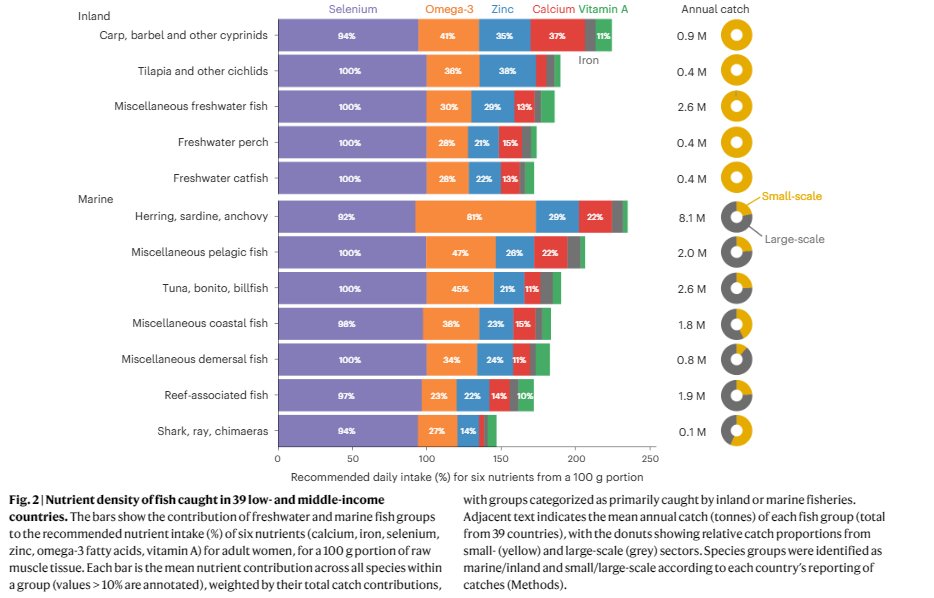Fish is expected to contribute to healthy diets where it is affordable and accessible but the cost and availability of nutrient-rich foods, including fish, is highly variable across and within countries. In the Global South, lower household income and proximity to markets and fisheries can restrict access to fish and thus limit its potential to contribute to people’s health. Yet scarcity of data on fish prices at the species level mean that large-scale analyses of fish affordability typically combine aggregate products by ecosystem category (for example, pelagic or demersal fish) or simply as ‘fish’. These data simplifications limit understanding of how the affordability of fish varies among species, production methods and locations. Furthermore, the productivity and nutrient content of wild-caught fish vary greatly, such that micronutrient-rich fish may not be available (that is, produced or traded) and affordable in every country.
Three key questions remain unanswered:
- Where are wild, micronutrient-rich fish affordable?;
- Which wild-caught species are the cheapest, most micronutrient-rich fish?; and
- Where do fisheries provide an abundant supply of nutritious food?
Here, the authors use catch, economic and nutrient data on 2,348 species to identify the most affordable and nutritious fish in 39 low- and middle-income countries. They find that a 100 g portion of fish cost between 10 and 30% of the cheapest daily diet, with small pelagic fish (herring, sardine, anchovy) being the cheapest nutritious fish in 72% of countries. In sub-Saharan Africa, where nutrient deficiencies are rising, <20% of small pelagic catch would meet recommended dietary fish intakes for all children (6 months to 4 years old) living near to water bodies. Nutrition-sensitive policies that ensure local supplies and promote consumption of wild-caught fish could help address nutrient deficiencies in vulnerable populations.

Read the Nature Food Article
You may also be interested in:
- The Role of Aquatic Foods in Sustainable Healthy Diets (UN Nutrition)
- The Role of Seafood in Sustainable and Healthy Diets (EAT-Lancet Commission)
- Consumer Concerns over Access to Healthy and Sustainable Food
- Plant-based Alternatives: The Environmental Sustainability and Health Implications
- Risky Seafood Business Summary Report
- Blue Food
- State of World Fisheries and Aquaculture 2022
- Gender and food loss in sustainable fish value chains in Africa